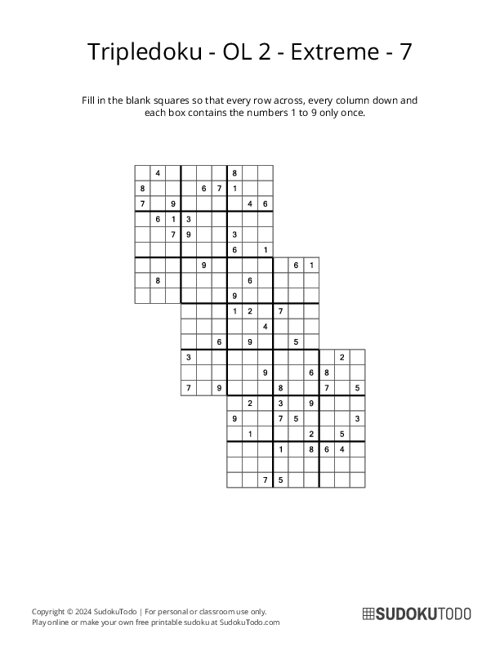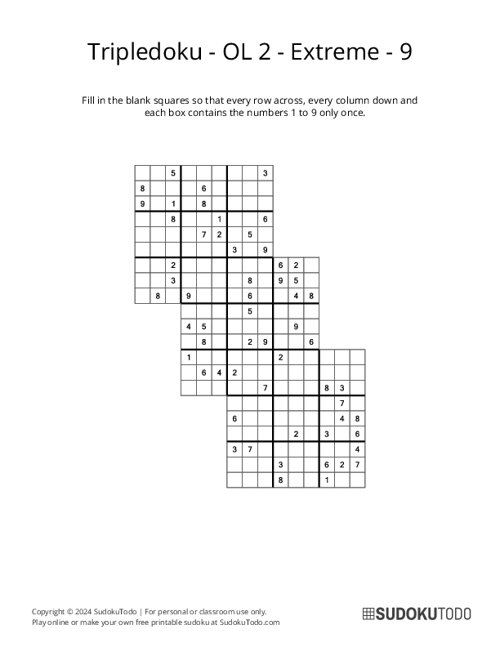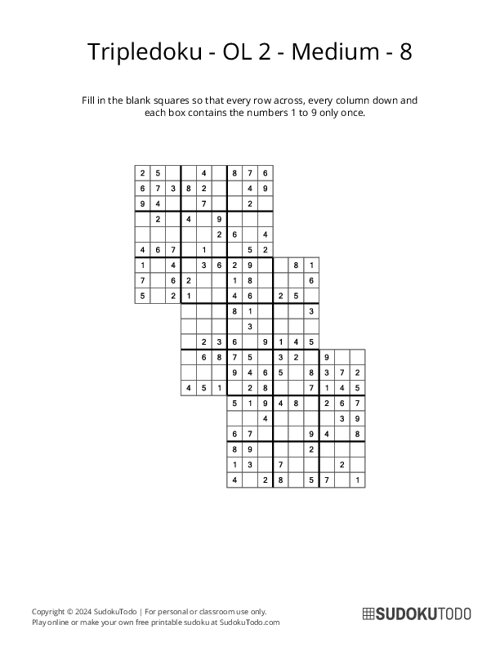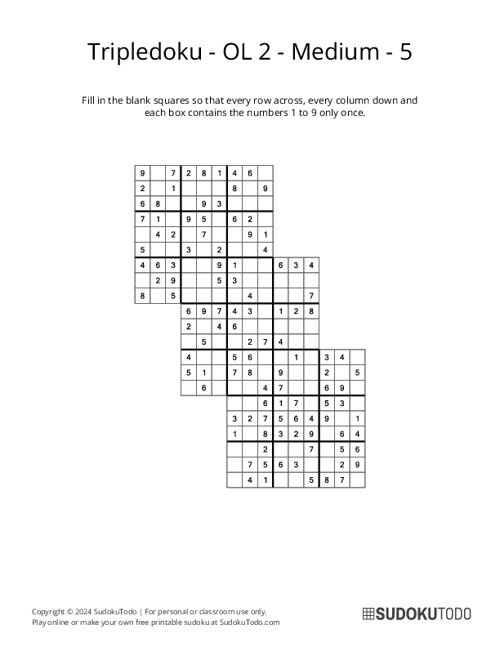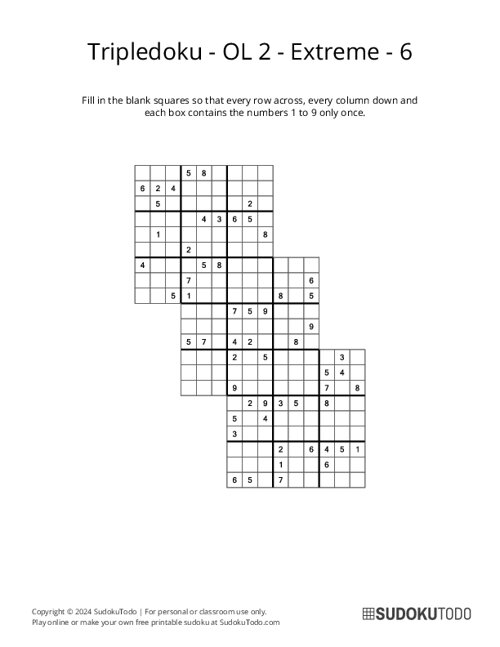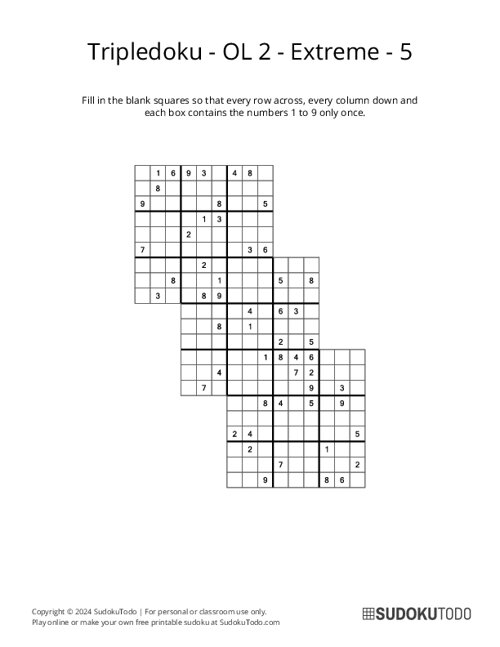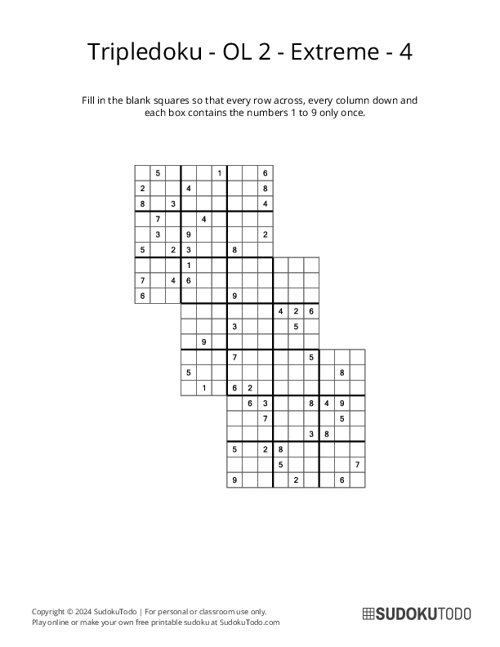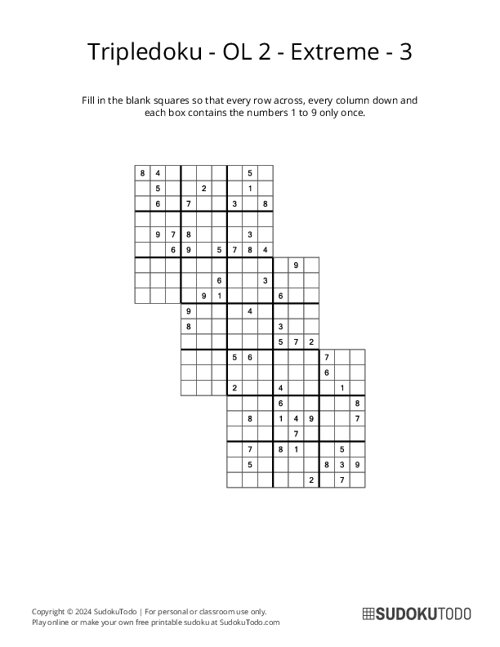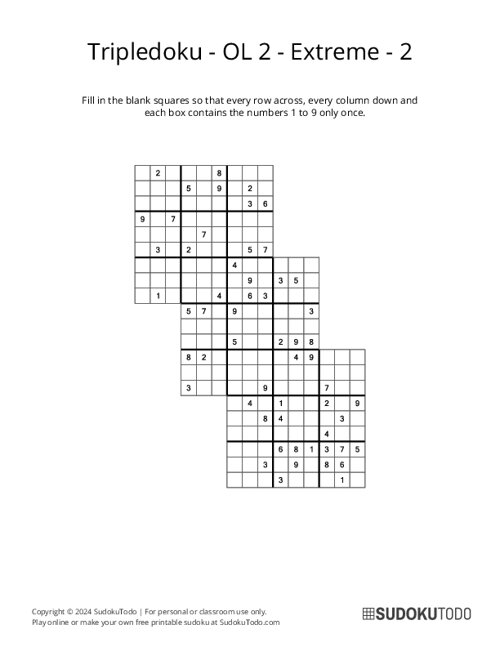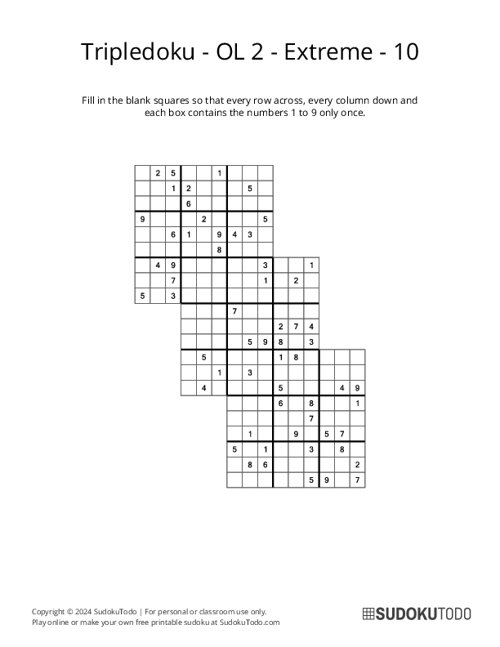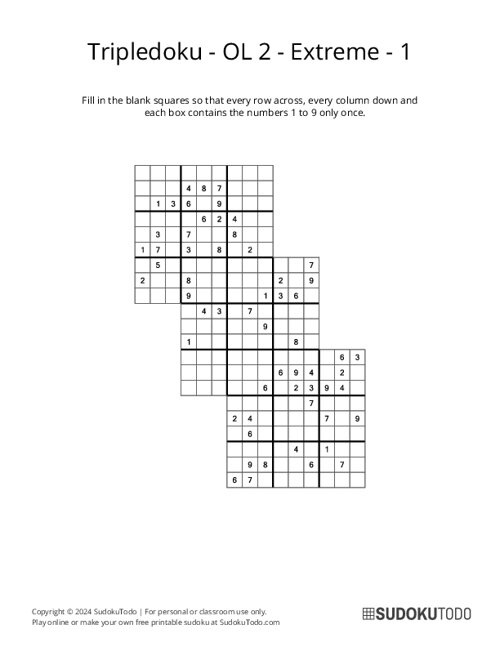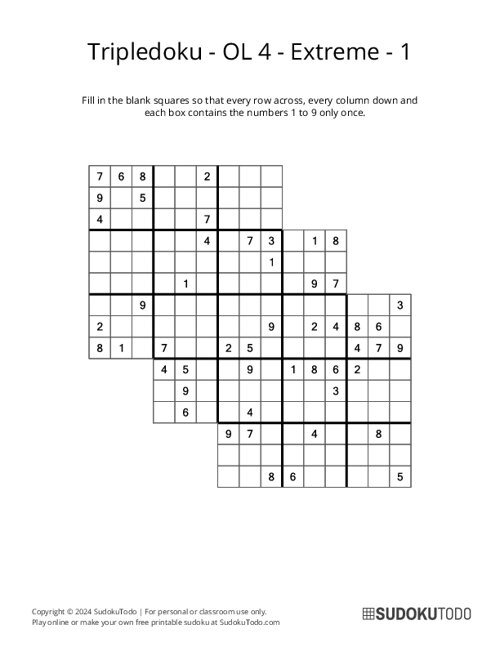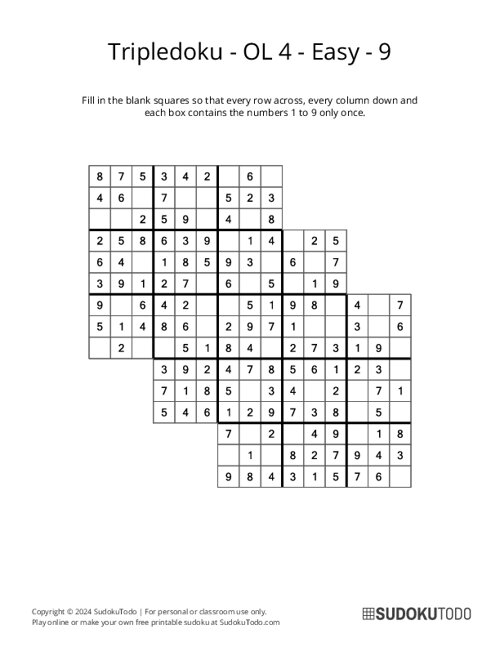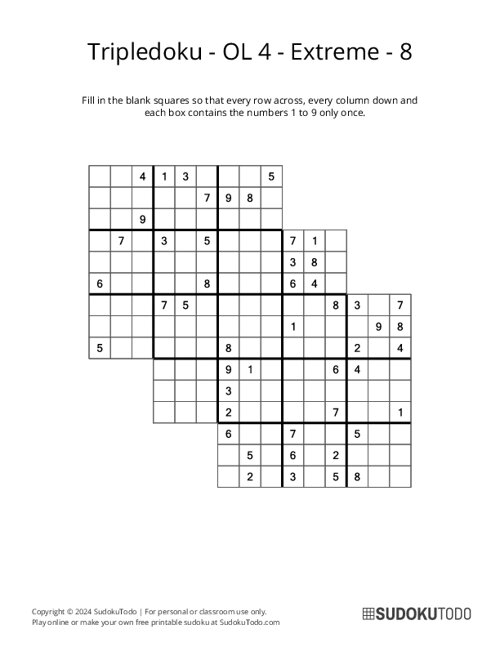Printable Sudoku
- Alphabet
- Battleships
- Binary
- Bridges / Hashi
- Chain Sudoku
- Consecutive
- Cross Sudoku
- Flower Sudoku
- Frame Sudoku
- Futoshiki
- Galaxies
- Greater Than
- Hitori
- Jigsaw Sudoku
- Kakuro
- KenKen
- Killer Sudoku
- Kropki Sudoku
- Little Killer
- Magic Squares
- Nonogram
- Odd Even Sudoku
- Outside Sudoku
- Rossini Sudoku
- Samurai Sudoku
- Sandwich
- Skyscraper
- Slitherlink
- Sohei Sudoku
- Star Battle
- Sudoku
- Sudoku for Kids
- Sudoku Mine
- Sudoku XV
- Sujiken
- Tripledoku
- Tripod Sudoku
- Twodoku
- Vudoku
- Windmill
Special Variations
Play / Solve
- Home»
- Tripledoku
Tripledoku Puzzles
Printable Tripledoku puzzles for all skill levels. Test your Sudoku skills with this unique variation featuring three interlocking grids. Download and print your copy now.
Showing 1-15 of 80 records
Sort by:
Tripledoku - Two - Extreme - 7
Tripledoku - Two - Extreme - 9
Tripledoku - Two - Medium - 8
Tripledoku - Two - Medium - 5
Tripledoku - Two - Extreme - 8
Tripledoku - Two - Extreme - 6
Tripledoku - Two - Extreme - 5
Tripledoku - Two - Extreme - 4
Tripledoku - Two - Extreme - 3
Tripledoku - Two - Extreme - 2
Tripledoku - Two - Extreme - 10
Tripledoku - Two - Extreme - 1
Tripledoku - Four - Extreme - 1
Tripledoku - Four - Easy - 9
Tripledoku - Four - Extreme - 8
About Tripledoku Puzzles
Tripledoku is a more advanced version of the traditional Sudoku puzzle. In regular Sudoku, there’s only one grid to fill out, but in Tripledoku, there are three overlapping grids. This means that you need to follow the usual Sudoku rules for each grid, but also make sure that the numbers work across all three grids at the same time.
This extra layer of complexity makes Tripledoku harder than the classic version. Like Double Sudoku, where there are two overlapping grids, Tripledoku challenges players to think more strategically and carefully. It requires more attention to detail and better problem-solving skills to find the right numbers for each spot. The overlapping grids make the puzzle more exciting and offer a greater challenge for Sudoku enthusiasts.
Basic Rules / How to Play
- Grid Layout: There are three 9x9 grids arranged side by side.
- Digits to Fill: Each grid adheres to the standard Sudoku rules: every row, every column, and every 3x3 subgrid must contain the numbers 1 through 9 with no repeats.
- Inter-Grid Rules: There are overlaps between the grids, with some squares belonging to two or even all three grids. Where grids overlap, the same number cannot appear in the same cell across the overlapping grids.
Solving Tips and Techniques:
While Tripledoku is similar to standard Sudoku, the introduction of triples requires additional strategies. Here are some common techniques to solve Tripledoku puzzles:
- Start with Clues: Begin by filling in all the numbers that are already provided as clues.
- Elimination: Start by filling in the grid using basic Sudoku rules. Focus on the easiest cells first, like the rows, columns, or boxes that already have the most numbers filled in, and rule out other options.
- Scanning: Find the rows, columns, or boxes with the least number of empty spaces, and figure out the missing numbers by checking across the rows, columns, and boxes.
- Pencil Marks: Fill in possible numbers in the empty cells to reduce the choices. This makes it easier to find the right solution for different options.
- Overlapping Cell Analysis: Look closely at the cells where grids overlap. Remove options that are already filled in those cells in other grids.
- Cross-Grid Analysis: Examine the rows and columns that cross each other in different grids. Look for patterns or contradictions that can help rule out certain options.
Tripledoku is tough because it uses three grids, making it more complicated. To solve it, you need to think carefully, use logic, and understand both regular Sudoku strategies and the special rules for the grids.
